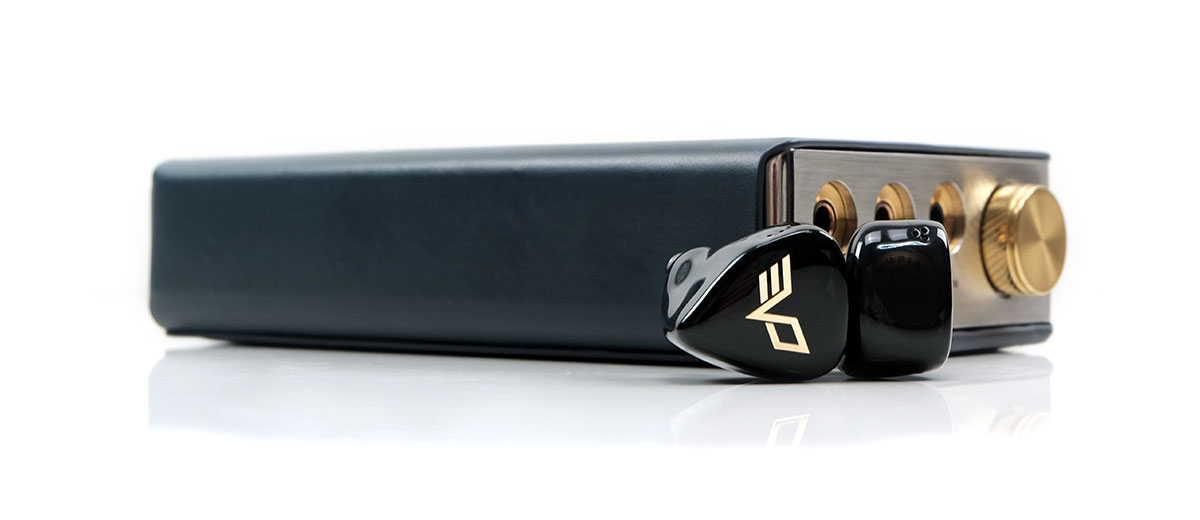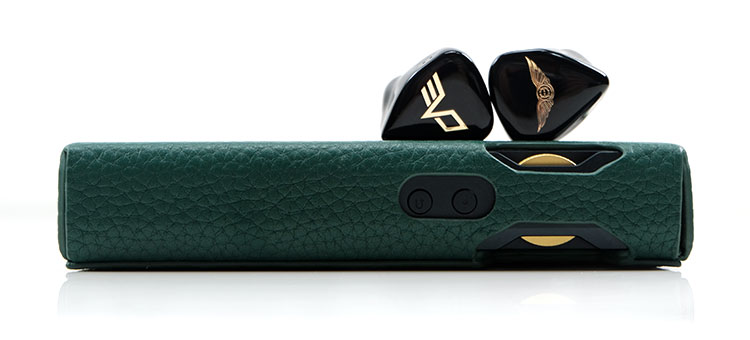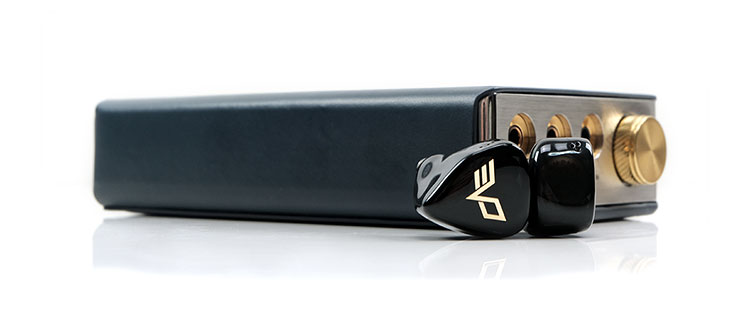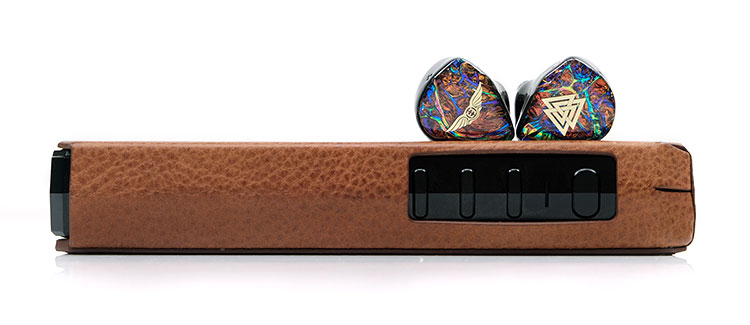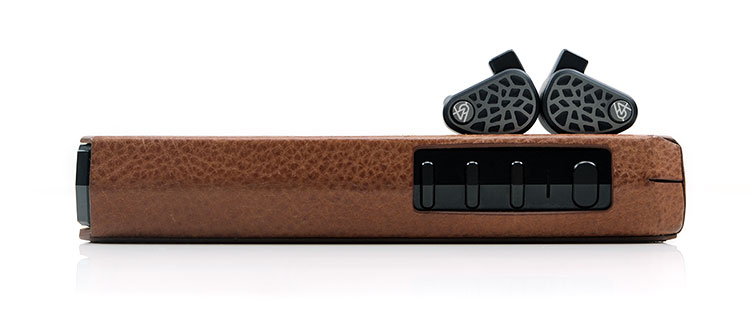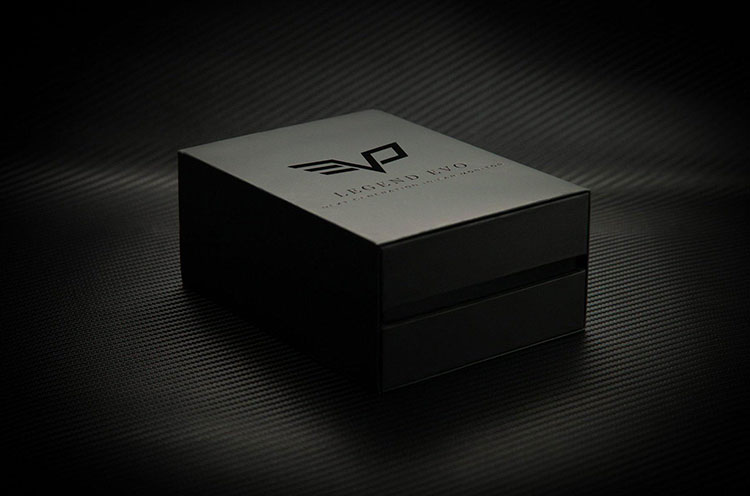Sound Impressions
Summary
Goodness, the Legend EVO is the absolute ‘thunder god’ of basshead monitors, at least those I have reviewed to date and I have gone through plenty. It is ridiculously addictive listening and I do not even classify myself as a basshead either.
The clincher is the fact it’s not just all bass bloat and not much else, the bass to mids separation is excellent, treble is smooth, and the detail is all there.
This is a very unique coloration, one to stick in your friend’s ear and watch their face just light up. It simply changes the way you listen to a lot of modern music and probably will have you diving for the bassist songs in your collection just to see how low things can go.
One other more nuanced observation is the mids to treble smoothness. The Legend EVO has those pumped upper mids much like the Odin but it sounds a bit more ‘gentile’, not as spicey with a more of an even-harmonic treble tuning and slightly less upper treble energy.
Those natural relaxed mids and treble tones do not grab you quite like Odin’s more aggressive vocal and percussion signature. This does make it easier to pair the Legend EVO with a wider range of DAPs but the perception will be the flagship Odin offering the stronger treble presence.
Frequency Response
On the response side, the elevation is at its steepest at 20Hz, and from there is a slide-down L-shaped style to the mids with a flatter 400Hz to almost 1k or the lower-mids for some essential bass to mid separation.
The bass response is at its most tactile on the sub-bass level where the amplitude is highest and oh boy does it rumble like a beauty. The most impressive aspect is this is not diffuse all over the place rumble either. DAPs such as the M15 and the DX300 MAX brings in some impressive layering and control to the Legend EVO’s low-end so you get the power but not the mush.
From 1-5k it does have a similar push that we found on the Odin but the key difference is what happened from 6k onwards. Instead of any secondary upper treble peaks, the Legend EVO stays relatively calm throughout with a more neutral line up to 10k.
That means the forward upper mids pick up a lot less odd harmonic overtones and keeps the vocals and percussion forward and clear but also quite smooth sounding.
Timbre
The Legend EVO has one of the most stunning fundamentals I have heard to date in a monitor. Every sub-bass note is just dripping with authority and just the right amount of warmth traveling upwards. It also has that classic dynamic driver timbre with a slightly longer decay but plenty of detailed texture.
It can be dominant but impressively those IX+ woofers do not bleed profusely into the mids. They sound controlled with that little lower-mids dip stopping its dead in its tracks allowing the 1-4k range to shine. Even more so a source where instrumental separation and air are supreme such as the iBasso DX300 MAX’s cavernous soundstage.
This is also not a high-contrast sound signature where the mids timbre is all weight and brightness with nothing in between. Yes, it is BA timbre but there is a good balance in the timbre with very little in the way of overt sibilance. That allows the 1-4k range to come through offering some really sweet-sounding female vocal harmonics unperturbed by that softer treble tuning.
More reference-style monitors such as the U18s will tease out a bit more richness in the lower-mids and male vocal performances but you could argue the Legend EVO pushes that vocal a little closer to you to compensate.
Upper mids and treble timbre are BA rather than electrostatic so for me, that means a flatter tone with less of that e-stat pristine quality, and with a shorter decay than Odin’s electrostatic highs.
EE has been smart to lay off the upper treble presence in the tuning. The Legend EVO percussion timbre isn’t overly liquid and rich sounding but neither is it overly bright either. Clean and clear and free of dissonance would be the best way to describe it.
Staging & Dynamics
A very deep soundstage but surprisingly, and with the right source, a very spacious one also. When I initially studied the FR and before hearing it I was worried that the more relaxed treble tuning would deliver a dark tone and maybe less air as a result keeping everything perhaps a bit bloated and congested sounding. That is simply not the case here.
The Legend EVO casts an impressively open sound stage with the IX+ woofers kept nicely in check from overpowering the mids. Vocals, particularly falsetto, soprano, and head voicing have some impressive presence and a bit of space behind them to shine. Male vocals, especially deeper chest voices below 1k, perhaps less so.
Aside from high-frequency percussion, vocals and sub-bass imaging are the most forward aspects of the Legend EVO staging performance. Lower-mids instrumental positioning is a little behind stretching the imaging front to back but also casting some impressive width also. It will not give you that classic narrower V-shaped mids performance.
As an addendum, sources do affect the Legend EVO imaging a little for me and where your ear is drawn to. Some draw you further down to that sub-bass rumble, whereas others offer something a bit more balanced in terms of staging.
For example, the DX300 MAX and M15 delivered the best layering on the low-end and creating more space but the M15 doesn’t do as well as the DX300 MAX for headroom. The Cayin R01 probably offers the best sub-bass presence and the DX300 and LP P6 Pro teases out vocal texture better than the others.
Synergy
Efficiency
The Legend EVO is rated at a very low 4.5Ω impedance and a not terribly sensitive 103dB SPL, (all weighted at 1Khz). You will not need much voltage for the Legend EVO though current demands are more than average so volume is a little higher than some more sensitive IEMs.
The good news is that the background is very black with a superb low noise floor with the likes of the FiiO M15 and HiBy’s R8’s 4.4mm outputs, ( using low gain non-turbo), which can sometimes throw up a bit of hiss with super sensitive monitors.
The Legend EVO is actually a little stronger for noise floor performance than the Odin which had a very minor level of hiss from the M15 balanced output though you can tease out some minor hiss from the R8 if you up to it to high gain and switch on turbo mode.
Impedance skew due to that very low 4.5Ω impedance rating is non-existent possibly due to the use of those XI+ woofers as opposed to relying on sensitive BA which is where it can be more noticeable. Testing with an iFi IEMatch using an older HiBy R6 didn’t show any sea change in the tonal makeup of the Legend EVO beyond the DAP’s own core sound signature.
Pairings
How you want to pair the Legend EVO really boils down to how you want that hear that bass trump card perform. Each of our paired DAPs brought a little something different to the low-end, as well as either fleshing out the mids beautifully or keeping it cleaner and delivering some additional space and headroom.
For example, the deepest sub-bass response came from the R01/N6ii pairing which surprised me as I was expecting the LP P6 Pro to be the lead candidate. However, it was the P6 Pro that gave the most balanced tonal signature of the tested DAPs with a detailed midrange instrumental and strong vocal texture. Here the R01 sounded a little thinner in comparison.
Two more examples of how you like your bass are the R8 and the M15, both with very different qualities when paired with the Legend EVO.
The R8 will give you the most bloom and warmth and it does have the best body of the two but slightly on the softer side also. The M15/Legend EVO has the superior layering on the low-end sounding tighter and more articulate for my money. However, neither are as firm or as vibrant though the mids and highs as the P6 Pro.
The final two, the iBasso DX300 MAX and the DX300 really stretch out the staging, especially the DX300 MAX. The MAX/Legend EVO pairing probably had the best instrumental separation of the tested DAPs with some excellent low-end depth but a more polished delta-sigma type of tone through the mids and highs.
The DX300 AMP11 MKI/Legend EVO pairing is warmer, less polished, and smoother in the mids but the bass response, though extending really well, doesn’t have the same impressive attack as the R01 or the MAX.
Select Comparisons
Empire Ears Odin
$3399
Technical
We reviewed the Odin around the same time last year and it is still currently Empire Ear’s flagship monitor. It does share some features with the Legend EVO but overall, it is a different kind of beast.
In terms of shared, the Odin and Legend EVO are hybrid multi-driver monitors that use a dual Weapon IX+ woofer configuration for the lows. The two monitors also use A.R.C. tech or an Anti-Resonance Compound coating on their internals and drivers.
Beyond that, things are very different. Internally, the Odin is an 11-driver tri-brid consisting of dual IX+ woofers, 5 BA for the mids, and a quad-Sonion electrostatic grouping for the highs powered by EE’s EIVEC tech.
Beyond the dual IX+ woofers, the Legend EVO also uses the 5 BA configuration for the mids and highs and that W10 bone conduction driver to further enhance the performance.
The efficiency of both is close, despite the differences with neither being impedance heavy at just 4.5Ω for the Legend EVO and an even lower 3Ω for the Odin. The Odin is marginally more sensitive at 108dB SPL compared to 103dB for the Legend EVO on paper but the real-world gap when comparing these two on portable sources is marginal at best.
Design
The aesthetics are quite different between the Legend EVO and the Odin, however, the build quality and form factor are similar. That means a heavily contoured opaque onyx acrylic hollow-body shell, 2-pin connectors flush to the body, and a medium-length nozzle with a 4-bore exit.
Where they differ is the dual conduction venting system on the Legend EVO with 6 exit ports instead of 3 per shell that slightly lowers the isolation compared to the Odin, their sizes, and aesthetically those faceplate designs.
The Odin is marginally the smaller of the two monitors and slightly lighter. I did notice the difference between the two when in the ear but both are very comfortable. The Legend EVO is also an all-black affair with strong gold branding accents on the plates whereas the Odin goes for ‘pop’ with that Bifrost faceplate rainbow collage of colors.
The cables are both PW Audio creations but quite different. The Legend EVO Genesis is a beefier 4-wire 24AWG Ultra-Pure OCC copper with a polypropylene-reinforced core wrapped in a translucent insulated UV-resistant polyvinyl chloride sheath.
The Odin Stormbreaker is the lighter of the two cables. This is a 2-wire, 4-conductor (2 positives, 2 negatives), OCC copper Litz geometry. It has a variable wire gauge, 26AWG for the positive side, and a larger 24AWG for the negative side. The wiring is wrapped in PW Audio’s signature nylon jacket and finished with a twist braid.
Performance
If you wanted a bit of a cheesy strapline then the Odin is the technical king whereas the Legend EVO is the musical master. Sure, both have some shared traits such as excellent deep sub-bass extension with a forward upper mids and a strong vocal presence.
However, the differing FR amplitude, particularly on the sub-bass and treble, changes the timbre somewhat for me on the Legend EVO to produce a somewhat smoother and more powerful sound signature.
The perceived bass extension on both is similar but the Legend EVO just ups the dB dramatically from 20Hz to around 400-500Hz or close to the lower mids to create a ton of sub-bass physicality and some gritty heavily textured dynamic driver rumble. You will perceive a lot more depth from the EVO simply because your ear is pulled harder to those superb Legend EVO lows.
The Odin’s additional electrostatic driver combo, lower sub-bass amplitude, and slightly flatter upper bass response produce a cleaner sound and one that is more articulate and airier on the highs.
That creates a little uplift in the harmonic balance towards the treble and a crisper overtone on the vocals and percussion. It also creates a perception of enhanced articulation and vocal presence though the imaging on both for vocals is actually quite similar.
Odin does create the more complex staging performance with those fast and pure e-stats drivers adding some finely balanced energy around 8-10k. The Legend EVO is just a little more relaxed in comparison with less of a bump in the same region to give it a more natural and softer tone.
Noble Audio Sultan
$2900
Technical
The Sultan is a multi-driver hybrid universal and the company’s current flagship monitor. Like the Legend EVO, it uses 3 different driver flavors, however, the Sultan is dynamic, BA and electrostatic mix whereas the Legend EVO’s drivers consist of dynamic, BA, and bone conduction.
The grouping for the Sultan is 7 drivers, with a single proprietary 10mm dynamic driver for the lows, 4 BA drivers for the mids, and dual Sonion electrostatic drivers for the highs. The EVO is a traditional 7 driver plus W10 bone conduction with dual IX+ for the lows and 5 BA for the mids and highs. The W10 is more like an additional focused layer covering a wide 5-35kHz range.
Noble does refer to the Sultan as a 3-way monitor so we assume there is no electrical crossover quite like the 9-way synX crossover network inside the Legend EVO.
In terms of efficiency, the Sultan ratings are slim on the ground, but that is just the way Noble operates. In our real-world tests using a Lotoo PAW Gold Touch 4.4mm PO on low gain, the Sultan was marginally more sensitive to current so its SPL is probably slightly higher than the Legend EVO’s 103dB rating.
Design
The Sultan is long rather than an overly large monitor consisting of three parts, main shell, faceplate holder, and faceplate. The faceplate is adorned with a stunning hand-finished aura or Galaxy swirl-type amber facade. The black shells are cut from a single aluminum block with a ribbed outer texture and separated from the plate via a silvery band with a similar ribbed finish.
The Legend EVO uses a lighter heavily contoured opaque onyx acrylic hollow-body shell which keeps it lighter but perhaps not as durable for drops and knocks.
It does have more aggressive contouring which helps it get a tighter fit in the ear compared to the more reserved curving of the Sultan. The Legend EVO finishing is piano black with matching plates and the strong gold logo accents on top.
The height is almost the same for both from nozzle bore to plate but the Sultan nozzle has more of an angle and a wider bore exit which, combined with fewer bass vents produces a bit more ear canal pressure and isolation. The Legend EVO is comfier in the ear but isolates a bit less due to the additional vents.
Cables are quite different on these two monitors with the Legend EVO Genesis more of a high-end offering compared to the $199 Premium cable attached to the Sultan.
The Premium cable is not without its merits. It also uses OCC Copper and is an 8-wire compared to the 4-wire inside the Genesis. However, that 8-wire is a smaller 26AWG rating as opposed to the 24AWG sized Genesis wiring. Both have excellent low microphonics performances with the Noble jacket a little softer than the stiffer Genesis jacket.
Performance
Both are aiming for that smooth, bass-heavy musical sound but that’s about it in terms of shared characteristics. The Sultan has the more balanced FR, not as extreme on the bass and upper mids, but a beautifully smooth-sounding midrange timbre.
The 10mm dynamic driver bass response is great on the Sultan but it just cannot match both the density and rumble of the Legend EVO sub-bass performance. There is a lot more character in the EVO dual IX+ woofers and they do substantially change the dynamic of a good basshead track sounding deeper and more powerful.
Higher-pitched percussion and upper treble tones on the Sultan have that distinctly electrostatic timbre with a longer decay and a more pristine quality to them than the Legend EVO BA treble.
You can hear that subtle difference in high hat patterns or rim shots where the Sultan notes linger a little longer compared to the Legend EVO which has a ‘flatter’ strike, more sustain, and a shorter decay.
The biggest difference aside from the bass and treble drivers is the technical performance where the Legend EVO has a bit more in the bag. Instrumental separation, staging size, and imaging cues are all livelier and easier to pick out. Of the two, the Legend EVO sounds the ‘bigger’ of two monitors with a blacker background.
The Sultan staging and dynamic range are just a little less distinct and closer to the listener compared to the Legend EVO. Vocals are more intimate and marginally richer despite the 1-3kHz range peaking a little lower than the Legend EVO. This is more about the slightly smaller staging quality of the Sultan pulling everything in as a whole rather than having overly intimate mids.
64 Audio U18s
$2999
Technical
Whilst not their flagship, (Fourte), the pricing is in the same ballpark and does provide a contrasting sound signature to the Legend EVO. Inside, the setup is all BA with no less than 18 drivers per side compared to 8 inside the Legend EVO.
The Legend EVO uses a blend of dual XI+ woofers, 5 BA, and the W10 bone conduction driver with a complex 9-way synX Crossover Network. The U18s uses 8 BA drivers for the lows, 8 for the mids, 1 for the mid-highs, and a tia driver for the highs with an integrated 4-way electronic passive crossover.
I guess you could say for the unique pitch here is the tia high for the U18s and the W10 for the Legend X. Both are relatively unique with tubeless highs for the 64 Audio monitor and bone conduction across a wide FR for the Legend EVO.
However, there is more to that with the U18s using apex filters, (3) to allow you to adjust the pressure levels and bass response as well as LID for impedance adjustments on the fly. The Legend X brings the Weapon XI+ woofer technology to the table along with A.R.C coating and that dual conduction architecture.
ON paper, the U18s is rated at 8Ω with a medium efficiency rating for a monitor of 106dB SPL. The Legend EVO is even lower at 4.5Ω but slightly less efficient at 103dB SPL on paper.
In real-world testing, that SPL gap did not show up as I expected. I honestly felt that the EVO was the more sensitive of the two sounding louder at similar volumes using the LPGT 4.4mm output in low-gain mode. The larger 24AWG stock wire with its lower resistance might also be a factor here.
Design
Both monitor designs opt for a solid black aesthetic but that’s about as far as design similarities go. I am a fan of the 64 Audio universal designs but I do admit that the tougher matte black aluminum shell is a bit more rigid in the ear and does not isolate as well as the Legend EVO’s contoured opaque onyx acrylic hollow-body shell.
However, the U18s is smaller and heavier than the Legend EVO and does not stick out as much in the ear. It is definitely more robust with a complex CNC milled faceplate that is a nod to geo rock designs or what 64 Audio describes as natural formations. The piano black and gold logo accents on the EVO are striking but simpler in their aesthetics.
The cable is where Empire Ears have nailed it with the Legend EVO. The Genesis 4-wire 24AWG Ultra-Pure OCC copper wire cable performs better compared to the U18s 48″ 8-conductor 44AWG 65-strand pure silver-plated oxygen-free copper wire. It may be the bigger cable and microphonics are both very low, but the dynamic range from the Genesis is improved.
Performance
These two monitors complement each other rather than compete against, the target audiences here are quite different. You also have to remember the U18s can deliver 3 different sound signatures with the apex filters.
Overall, the U18s is smooth sounding, with a coherent BA timbre and an almost reference-like high-end presentation. Nothing is out of whack, emphasized to the hilt, or recessed unnaturally. It was built for stage monitoring booths, so it needs to stay non-fatiguing and very coherent for hours and it does just that.
The Legend EVO is vibrant, dynamic, and more aggressive with a heavier and distinct dynamic driver timbre offering plenty of rumble on the lows and a forward upper-mids BA overtone with a stronger vocal presence. This is built for listening rather than monitoring.
Despite having what I consider to be a smooth treble the Legend EVO does have comparatively more sparkle than the U18s and thus more perceived headroom. I suspect the forward upper mids on the Legend EVO catch a bit more treble overtone than the more reserved bump on the U18s creating that cleaner timbre also.
You can alter the tuning with the U18s though if you want something a little breezier and airier on the upper mids and highs with the m15 module offering the best balance with excellent separation and speed. It will, however, suck out the bass a bit more creating a bigger contrast with the Legend EVO deeper staging quality.
The U18s m20 module will enhance the bass, creating a bit more density and weight though it is still very much a tight BA performance compared to the Legend EVO’s big dynamic driver sound.
Our Verdict
When we judge gear we tend to rate them on what they set out to achieve and do they do it well. It is less about personal preference and more about ok, let’s step into the shoes of the target market and ask ourselves are the best they can be for that perceived audience.
In the case of the Legend EVO, that’s a big yes. I can’t fault it in this regard and it hardly puts a foot wrong. This is a bass monster, but a monster with refined taste and also one that brings some sort of A-game to the mids and treble table in terms of resolution and timbral balance.
Can I see the jazz and emo crowd dig it in the same way? I am not so sure but then again you also have the Odin waving at you if you want something a bit more tempestuous in the highs. The Legend EVO is built for pure power and some fun listening and delivers it in a very addictive and satisfying manner.
Empire Ears Legend EVO Specifications
- Dual W9+ Subwoofers
- Five Precision Balanced Armatures
- Weapon X Bone Conduction Ultra Driver
- 9-Way synX Crossover Network
- Dual Conduction Architecture
- ARC Resonance Mitigation Technology
- Impedance: 4.5 Ohms @ 1kHz
- Frequency Response: 5Hz-35kHz
- Sensitivity: 103dB @ 1kHz, 1mW
- Empire X PWAudio “GENESIS” Ultra Pure OCC Copper Cable, 4.4 Pentaconn Termination




